独ソ戦のおすすめ参考書16冊一覧~今だからこそ学びたい独ソ戦
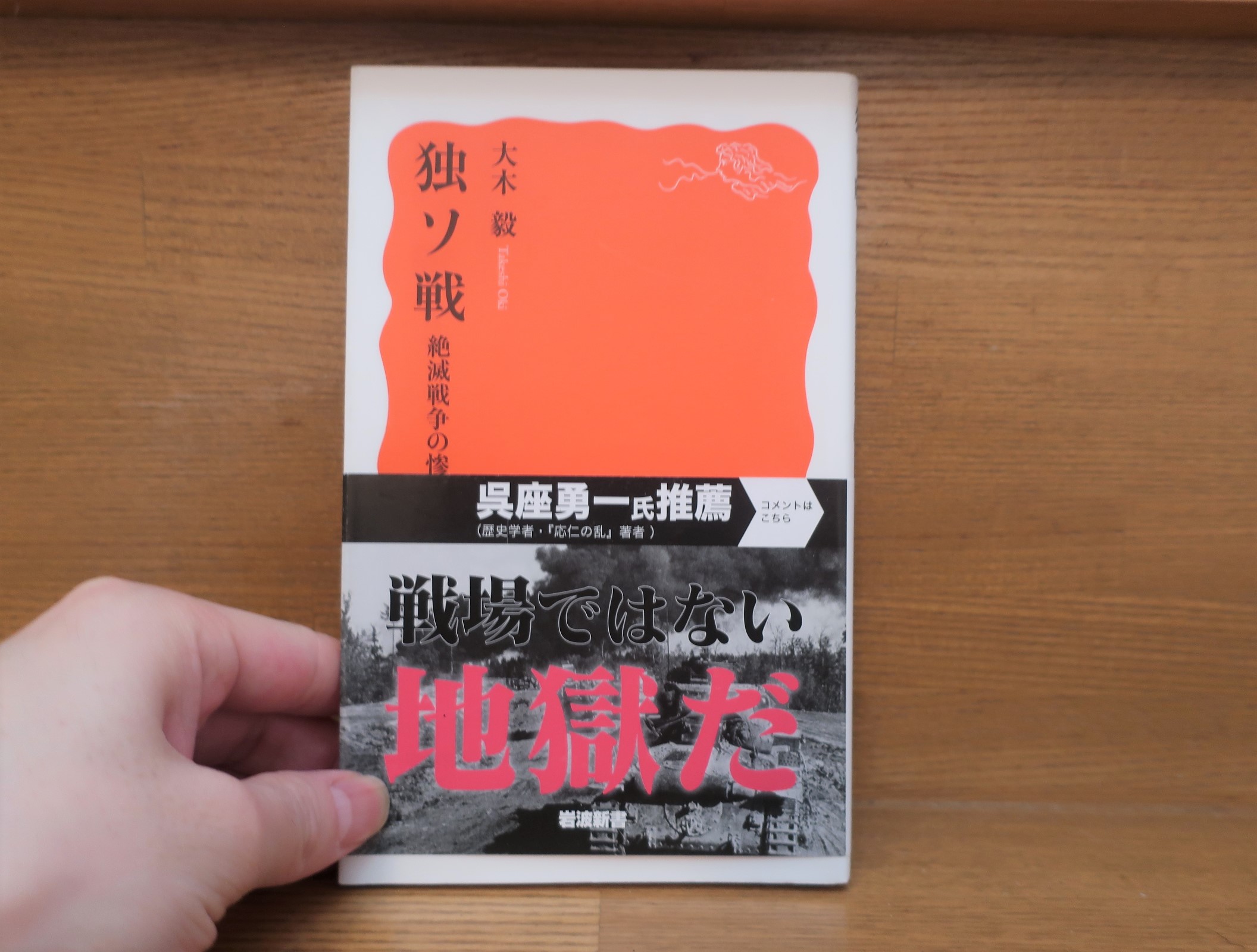
独ソ戦のおすすめ参考書16記事一覧
この記事では独ソ戦を学ぶのにおすすめな参考書を紹介していきます。
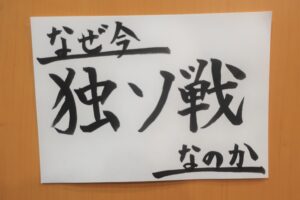
この記事でもお話ししましたが、想像を絶するほどの規模の戦いとなった独ソ戦は戦争の本質をこれ以上ないほど私たちの目の前に突き付けます。
なぜ戦争は起きたのか。戦争は人間をどう変えてしまうのか。虐殺はなぜ起こるのかということを学ぶのに独ソ戦は驚くべき示唆を与えてくれます。私自身、独ソ戦を学び非常に驚かされましたし、戦争に対する恐怖を感じました。これまで感じていた恐怖とはまた違った恐怖です。ドラマや映画、ドキュメンタリーで見た「被害者的な恐怖」ではなく、「戦争そのものへの恐怖」です。
戦争がいかに人間性を破壊するか。
いかにして加害者へと人間は変わっていくのか。
人々を戦争へと駆り立てていくシステムに組み込まれてしまえばもはや抗うことができないという恐怖。
平時の倫理観がまったく崩壊してしまう極限状態。
独ソ戦の凄まじい戦禍はそれらをまざまざと私たちに見せつけます。
それぞれの記事でより詳しく本の紹介をしていますので、興味のある方はぜひ記事の方もご参照ください。
大木毅『独ソ戦 絶滅戦争の惨禍』独ソ戦の入門書におすすめ!
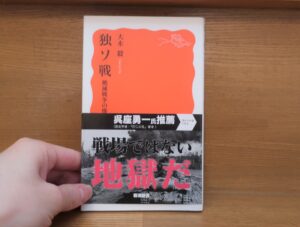
この本は今とても売れているそうで、2020年新書大賞の1位を獲得しました。
独ソ戦をテーマにした本がここまで売れるというのはそれだけでも興味深い現象です。それだけ全体主義や戦争への関心が高まっているということなのでしょうか。
この本では独ソ戦がなぜ始まったのか、そしてどのように進んで行ったかがわかりやすく解説されています。
そしてこの戦争における巨大な戦闘、モスクワ攻防戦、レニングラード包囲戦、スターリングラード攻囲戦についても解説していきます。独ソ戦の勝敗を決定づけるこれらの巨大な戦いとは一体どんなものだったのか。信じられないほどの犠牲者を出した圧倒的な戦いを私たちは知ることになります。
「独ソ戦の全体像を知る」
「なぜ独ソ戦はこんなにも犠牲者を出すことになったのか」
という二本の柱ががっちりとこの本を支えています。
わかりやすく、そして読みやすい!そして新書サイズの本で巨大な独ソ戦がコンパクトにまとめられているのもありがたいです。これはすごいことだと思います。
独ソ戦を学ぶ入り口として最適な本です。この戦争の全体像をざっくりと把握することができます。とてもおすすめな1冊です。
Amazon商品ページはこちら↓
『世界史劇場 第二次世界大戦 熾烈なるヨーロッパ戦線』WW2の流れを掴むのにおすすめな1冊
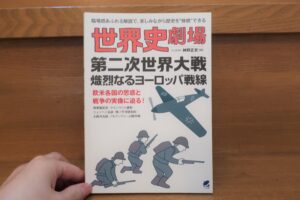
ひとつ前の記事では独ソ戦を学ぶ入門書としておすすめな本、大木毅著『独ソ戦 絶滅戦争の惨禍』をご紹介しましたが、この本はさらに広く、第二次世界大戦全体の流れを掴むのにおすすめな本となっています。
『世界史劇場 第二次世界大戦 熾烈なるヨーロッパ戦線』WW2の流れを掴むのにおすすめな1冊
Amazon商品ページはこちら↓
『世界史劇場 ナチスはこうして政権を奪取した』ヒトラーの権力掌握の過程を知るのにおすすめな参考書!
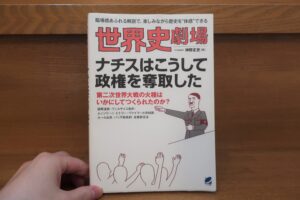
第二次世界大戦を知るにはヒトラー台頭の歴史を知ることが不可欠です。
ヒトラーはどのような人物だったのか。どのように権力を掌握していったのか。ヒトラーのナチスは何を考え、何をしようとしていたのか。
これらのことを学ぶ上でこの本は非常にわかりやすく面白い参考書となっています。
この本のありがたいのはヒトラーのことだけではなく、ヒトラーが出てくる前の世界情勢もしっかり解説してくれるところです。
第一次世界大戦後のヨーロッパがいかに歪んでいたか、そしてドイツ国民がどのような状況に置かれていたかを知ることができます。
ヒトラーが台頭していったのは、彼の主張が通りやすい状況にあったからというのがよくわかります。神野氏の解説によって歴史の流れがすっと入ってきます。
ヒトラーはヒトラーだけにあらず。国際社会やドイツ国内の複雑な背景が絡み合ってヒトラーが生まれてきたことを学べます。
『世界史劇場 ナチスはこうして政権を奪取した』ヒトラーの権力掌握の過程を知るのにおすすめな参考書!
Amazon商品ページはこちら↓
『モスクワ攻防戦ー20世紀を決した史上最大の戦闘』独ソ戦をもっと知るならこの1冊!

筆者のアンドリュー・ナゴルスキはアメリカのジャーナリスト・作家で1973年に『ニューズウィーク』誌の記者となり、モスクワ、ローマ、ボン、ワルシャワ、ベルリンの支局長を歴任した人物です。
上で紹介した大木毅著『独ソ戦 絶滅戦争の惨禍』では、第二次大戦における独ソ戦の全体像が語られていました。その本の巻末にある文献解題でも本著『モスクワ攻防戦ー20世紀を決した史上最大の戦闘』は紹介されており、独ソ戦をもっと知りたい方にはとてもおすすめな本となっています。
写真や図も豊富で当時の様子をイメージしやすくなっています。
そして何より、読み物としてとても面白いです。著者の語り口が素晴らしく戦争という難しい内容ながらぐいぐい引き込まれてしまいます。なぜモスクワ攻防戦は世界最大規模の戦闘となったのか。なぜ兵士たちは無駄死にしなければならなかったのか。無敵と思われたドイツ軍がなぜ敗北したのかということがドラマチックに語られていきます。
『モスクワ攻防戦ー20世紀を決した史上最大の戦闘』独ソ戦をもっと知るならこの1冊!
Amazon商品ページはこちら↓
『レニングラード封鎖 飢餓と非情の都市1941-1944』ー80万人以上の餓死者を出したサンクトペテルブルクの包囲戦
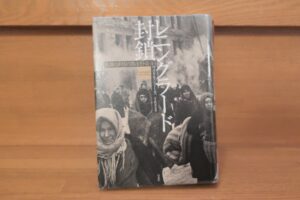
独ソ戦の中でも特に悲惨な戦いの一つとして有名で、レニングラード(現サンクトペテルブルク)というロシアの旧首都を舞台にした壮絶な包囲戦がこの本で語られます。
この本はあまりにショッキングです。かなり強烈な描写が続きます。地獄のような世界でレニングラード市民は生きていかなければなりませんでした。市民が飢えていき、どんどん死んでいく様子がこの本では語られていきます。生き残るために人々はどんなことをしていたのか。そこで何が起きていたのか。その凄まじさにただただ呆然とするしかありません。80万人以上の餓死者を出したというその惨状に戦慄します・・・
独ソ戦の悲惨さを学ぶのにレニングラード包囲戦は必読です。弾丸飛び交う戦場だけが戦争ではありません。一般市民を餓死させるという戦略的包囲も戦争のひとつの大きなあり方です。
この本はそうしたことを学ぶ上でも最適な1冊です。読むのに覚悟がいる本ではありますがぜひおすすめしたい作品です。
『レニングラード封鎖 飢餓と非情の都市1941-1944』ー80万人以上の餓死者を出したサンクトペテルブルクの包囲戦
Amazon商品ページはこちら↓
『スターリングラードー運命の攻囲戦1942-1943』戦争ノンフィクションの金字塔
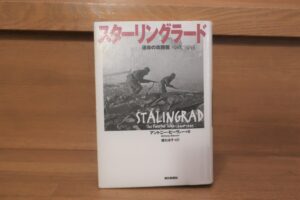
スターリングラードの攻囲戦は独ソ戦の勝敗に大きな影響を与えた最大級の戦闘の一つです。
モスクワ攻防戦が郊外での防衛戦であり、レニングラードの戦いは包囲戦でした。それに対しこの戦闘はスターリングラード周辺地域だけでなく大規模な市街戦となったのが特徴です。空爆と砲撃で廃墟となった街の中で互いに隠れ、騙し合い、壮絶な戦闘を繰り広げたのがこの戦いでした。スターリングラードの死者はソ連側だけで80万人を超えると言われています。
訳者解説でも絶賛されていた本書ですが、この本はたしかに面白かったです。一気に読み込んでしまいました。
独ソ戦の流れを決したスターリングラードの戦いをこの本では余すことなく知ることができます。
この戦いを境にナチスドイツ軍は敗北への道を一気に転げ落ちていくことになります。
モスクワ攻防戦では郊外での巨大な戦闘と冬将軍の到来を。
レニングラード包囲戦では信じられないほどの餓死者を出した惨劇を。
スターリングラードの戦いでは史上最大規模の市街戦を目撃することになります。
独ソ戦ではそれぞれの戦いでそれぞれの戦闘がありました。しかもそのどれもが常軌を逸した巨大な戦いです。
独ソ戦のあまりの規模に衝撃を受けることになった最近の読書でした。
この本も非常におすすめです。たった数メートルの陣地をめぐり死闘が繰り広げられた市街戦の恐ろしさを知ることになります。ぜひ手に取って頂けたらなと思います。
『スターリングラードー運命の攻囲戦1942-1943』戦争ノンフィクションの金字塔
Amazon商品ページはこちら↓
スターリングラード 運命の攻囲戦 1942-1943 (朝日文庫)
『ベルリン陥落 1945』第二次世界大戦の終結ーソ連の逆襲と敗北するナチスドイツ
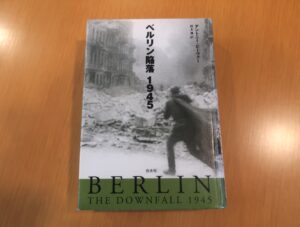
独ソ戦の開始時はナチス軍の圧倒的な戦力によってソ連領域は蹂躙され、そこではナチスによる残虐な殺戮が繰り返されました。
しかしいつしか形勢は逆転、ソ連は侵略されたエリアを取り返しベルリンへ進撃していきます。しかしその過程で今度はソ連軍による暴虐がそのエリアで繰り返されることになります。
独ソ戦の特異な点は敵を殲滅せねばならぬというプロパガンダと実際の行動が結びついた点にあります。未曽有の犠牲者が出た独ソ戦の本質がこの本で考察されています。
『ベルリン陥落 1945』第二次世界大戦の終結ーソ連の逆襲と敗北するナチスドイツ
Amazon商品ページはこちら↓
『戦争は女の顔をしていない』独ソ戦を体験した女性達の声に聴くー現在、日本でコミック化もされている名著
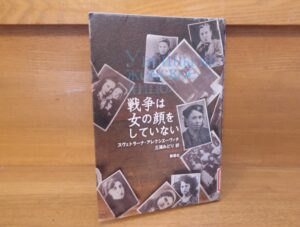
この本は著者のアレクシエーヴィチが独ソ戦に従軍、あるいは戦禍を被った女性にインタビューし、その記録を文章化したものになります。独ソ戦という巨大な歴史の中では個々の人間の声はかき消されてしまいます。特に、女性はその傾向が顕著でした。戦争は男のものだから女は何も語るべきではない。そんな空気が厳然として存在していました。
そんな中アレクシエーヴィチがその暗黙のタブーを破り、立ち上がります。アレクシエーヴィチはひとりひとりに当時のことをインタビューし、歴史の闇からその記憶をすくいあげていきます。
この本は衝撃的です。かなり生々しい物語が語られます。そして本のタイトルにありますように独ソ戦を女性の目線から見ていきます。これまで語られた「男らしい」戦争のイメージをひっくり返すような話がたくさん出てきます。読んでいると胸が締め付けられるような語りが次々と出てきます。戦争の実態をこれ以上なく私たちの前に突きつけます。
そして今この本は漫画化もされているそうです。
原作を読了。衝撃的な1冊でした。漫画化もされているそうです!#戦争は女の顔をしていない #読書好きと繋がりたい
— 上田隆弘@函館錦識寺 (@kinsyokuzi) April 22, 2021
その本は、長く出版禁止だった。語られなかった〈女たちの戦争〉を今マンガで届ける理由 https://t.co/Occ2S94T60 @hyamazaki26より
この記事で原作を含め、漫画の内容も詳しく解説されていますのでぜひご覧になってみてください。
非常におすすめな1冊となっています。
『戦争は女の顔をしていない』独ソ戦を体験した女性達の声に聴くー現在、日本でコミック化もされている名著
Amazon商品ページはこちら↓
『カチンの森 ポーランド指導階級の抹殺』ーソ連が隠蔽した大量虐殺事件とは
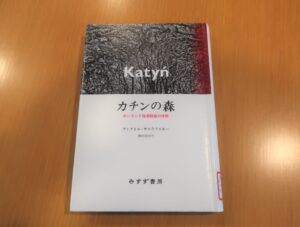
アウシュヴィッツのホロコーストに比べて日本ではあまり知られていないカチンの森事件ですが、この事件は戦争や歴史の問題を考える上で非常に重要な出来事だと私は感じました。
歴史が隠蔽され続け、連合国側もそれに加担していたというのは無視できない問題だと思います。無条件に連合国あるいは国連を信じる危険性を感じました。国際情勢においてはこうしたことが実際に起きているということを忘れてはいけないと改めて思ったのでありました。歴史の怖さを感じる一冊です。
日本ではあまり知られていない事件ですが、これを学ぶ意義は非常に大きいものと思われます。
国の指導者、知識人層を根絶やしにする。
これが国を暴力的に支配する時の定石であるということを学びました。非常に恐ろしい内容の本です。ぜひ手に取って頂ければなと思います。
『カチンの森 ポーランド指導階級の抹殺』ーソ連が隠蔽した大量虐殺事件とは
Amazon商品ページはこちら↓
『ノモンハン1939 第二次世界大戦の知られざる始点』独ソ戦に巨大な影響を与えた大事件
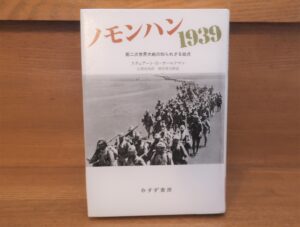
スチュアート・D・ゴールドマン著、山岡由美訳『ノモンハン1939 第二次世界大戦の知られざる始点』は2013年みすず書房より発行されました。
まず先に言っておきます。この本はものすごいです。
ノモンハン事件という、私たちも名前だけは知っている歴史上の出来事が想像もつかないほど巨大な影響を世界に与えていたということがこの本で明らかにされています。
日本はなぜ第二次世界大戦で悲惨な敗北を繰り返したのか、なぜ軍部が暴走し無謀な戦闘を繰り返したのかもこの本では分析されています。読むとかなりショックを受けると思います。私もこの本を読んでいて何度も「嘘でしょ・・・」と唖然としてしまいました。それほどショッキングな内容となっています。
日本がなぜ戦争に突入していったのか、そしてなぜ敗北を繰り返したのかということがこの本ではとても明確に分析されています。海外の研究者だからこそ見れる日本像というものが描かれています。
またこの出来事がスターリンとヒトラーにとってどのような意味があったのかということも明らかになります。
第二次世界大戦を局地的に見るのではなく、全世界のつながりとして見ていく視点をこの本では学べます。第二次世界大戦を捉え直す素晴らしい機会となります。
この本は今の日本を見ていく上でも非常に重要な問題提起を与えてくれます。これからの日本のためにもぜひ手に取ってほしい1冊です。非常におすすめな1冊となっています。
『ノモンハン1939 第二次世界大戦の知られざる始点』独ソ戦に巨大な影響を与えた大事件
Amazon商品ページはこちら↓
『赤軍記者グロースマン 独ソ戦取材ノート1941-45』ソ連のユダヤ人従軍記者が見た独ソ戦の現実
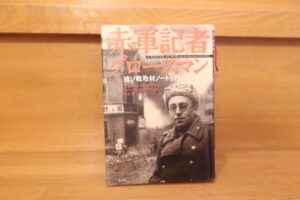
ここでご紹介するのは2007年に白水社より出版されたアントニー・ビーヴァー、リューバ・ヴィノグラードヴァ編、川上洸訳『赤軍記者グロースマン 独ソ戦取材ノート1941-45』という本です。
この本はユダヤ人であるグロースマンが実際に独ソ戦の戦地に赴き、従軍記者として取材した記事やノートを時系列に沿ってまとめたものになります。
最前線で戦う兵士たち、そして戦争に巻き込まれた人々の姿を従軍記者の目線でグロースマンは描いていきます。
グロースマンは元々愛国的な思想を持って戦争に従軍していました。侵略してきた凶悪なナチス軍を迎え撃つロシアの兵士たちを、ソ連こそが正しいという信念を持って取材していきます。
兵士たちの勇敢さに心打たれるグロースマンでしたが、ソ連軍が優勢になりナチス占領地域に進攻していくとその思いが揺らいできます。
進軍先でナチス軍と変わらぬ蛮行をする兵士たちや戦争の悲惨な現実を目の当たりにし、スターリンの掲げる愛国神話に疑問を持ち始めます。
また、何より印象的なのが、ナチスのホロコーストの現場を取材した部分です。ホロコーストというと、私たちはアウシュヴィッツを想像してしまいますが、トレブリーンカという絶滅収容所についてこの本では述べられています。そこでは80万人以上の人が殺害されています。その凄惨な殺害の手法は読んでいて寒気がするほどです。それを現地で取材したグロースマンはどれほど衝撃を受けたのか想像することもできません。
理想を信じ、愛国心から従軍したグロースマン。
その彼が戦争の真実を知り、人間の残酷な側面におののくことになります。
やがてスターリンから反体制とみなされ粛清されかけるほど、彼の思想は変わってしまうのでした。
そうした彼の思想の変化がどのようにして起こったのかということをこの本では知ることができます。
独ソ戦という世界の歴史上未曽有の絶滅戦争を最前線で取材した彼の記録は必見です。とてもおすすめな1冊です。
『赤軍記者グロースマン 独ソ戦取材ノート1941-45』ソ連のユダヤ人従軍記者が見た独ソ戦の現実
Amazon商品ページはこちら↓
ワシーリー・グロスマン『人生と運命』あらすじ解説ー独ソ戦を生きた人々の運命を描いたロシア文学の傑作!
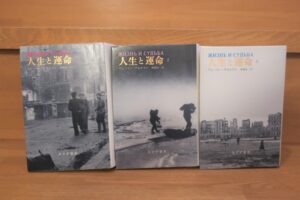
この小説は三部構成の大作です。大き目の単行本にして1350ページ超の大ボリューム。
ロシア文学史上でも有数の傑作と知られる本書ですが、読むのも覚悟がいる作品です。
ソ連において体制批判はタブー中のタブーです。強制収容所送りや死刑を覚悟しなければなりません。グロスマンはこの作品を書き上げるもKGBの家宅捜索を受け没収されてしまいます。そして当局から危険書物扱いをされ「今後2~300年、発表は不可」と宣告されます。
「今後2~300年、発表は不可」という宣告のものすごさ。この小説がどれだけソ連当局にとって危険なものだったかがうかがえます。逆に言えば、それだけソ連にとって都合の悪い真実を映し出していたということができるかもしれません。
このような小説ではありましたが、奇跡的に原稿の写しが彼の死後に海外に渡り、この本が出版されることになりました。もしこの奇跡的な国外出版がなければ、世界の歴史上に燦然と輝くこの小説は誰にも知られることなくひっそりと葬り去られていたかもしれません。
独ソ戦という極限状況の中、グロスマンが描く人物達のなんとリアルなことか・・・読んでいて思わずため息が出るような、そして私たちを悩ますようなそんな描写がたくさん出てきます。もし自分がこんな状況に置かれたらどうするだろうか。すべてを犠牲にしても自分の信念を守れるだろうか。体制に「NO!」と言えるだろうか。誰かを裏切らずにいられるだろうか。グロスマンはものすごい迫力で私達に迫ってきます。
この小説を読んで改めて感じたのは、あの戦争において一人一人が想像もできぬような苦しみや恐怖を抱いて死んでいったということです。「100万人が殺されたという事実」は「想像を絶する苦しみや死が100万通りあった」ということなのだと思い知らされました。単純に「100万人が殺されたんだ」で終わらせてはいけないものがあるんだとグロスマンに言われているような気がしました。
ワシーリー・グロスマン『人生と運命』あらすじ解説ー独ソ戦を生きた人々の運命を描いたロシア文学の傑作!
Amazon商品ページはこちら↓
ワシーリー・グロスマン『万物は流転する』あらすじ解説ースターリン死後も続くソ連抑圧時代の苦悩を描く傑作小説
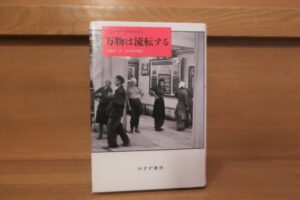
この小説の前半部分では体制に迎合し、密告して自分の生活を守り安穏な生活をした人間と、自らの主張を守り、強制収容所送りになった主人公を対置し、スターリン死後の世界に生きる人々の心の断絶を描きます。
生きるためには仕方がなかったと自己弁護をする密告者。内心は人を貶めたという罪悪感を感じているものの、それに蓋をして安穏と生き続ける人たち。
はたして彼らは悪人なのか。それとも彼らにそれを強いた体制こそ悪なのか。これは誰のせいなのか。
スターリンという独裁者がすべて悪いという考え方がスターリンの死後喧伝されます。しかし本当にそうなのか。密告に加わった者は本当に何の罪もないのかとグロスマンは問います。
中盤ではスターリンが主導したウクライナの大飢饉について語られます。この飢饉は天災によるものではなく人為的に起こされたものでした。その冷酷無慈悲な収奪を厳しく批判します。
そして後半ではレーニンが生み出し、スターリンが完成させたソ連の恐怖政治の成り立ちと構造を分析します。自由を奪うシステムがいかにして生まれ、機能しているかをグロスマンは語ります。
ソ連政権下でそうした批判は絶対にタブーです。これを書き上げたグロスマンの勇気は信じられないほどです。これほどのものを粛清の恐怖に屈せずに書き上げたグロスマンには驚かざるをえません。それほど彼の中で「自由とは何か」という問題が強烈にあったことを感じます。
ワシーリー・グロスマン『万物は流転する』あらすじ解説ースターリン死後も続くソ連抑圧時代の苦悩を描く傑作小説
Amazon商品ページはこちら↓
衝撃の一冊!ティモシー・スナイダー『ブラッドランド ヒトラーとスターリン 大虐殺の真実』
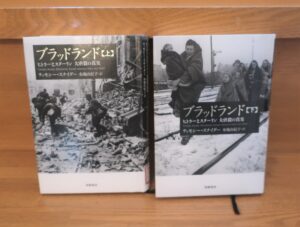
この本はスターリンとヒトラーの大量虐殺について書かれたものです。
しかもこれまで語られてこなかった事実がこの本で明るみに出されます。これは以前当ブログでも紹介した『スターリン伝』と同じく、新たな資料がソ連崩壊によって次々と発見されてきているからです。
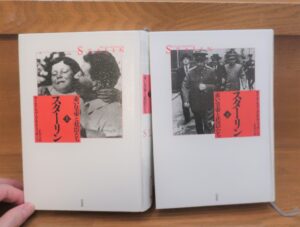
そして何より、この本はナチスによるホロコーストについても多くの言及があります。
私は2019年にアウシュヴィッツを訪れました。人類の犯した悲惨な過去を学ぼうと思ったからです。
しかしです。この本を読んで自分がいかに何も知らないのかということを思い知らされることになりました。
それはこの本を読んでいく過程で皆さんにも明らかになっていくと思います。アウシュヴィッツに対する見方が変わってしまうほど衝撃的な事実がそこにはありました。
訳者が「読むのはつらい」と言いたくなるほどこの本には衝撃的なことが書かれています。しかし、だからこそ歴史を学ぶためにもこの本を読む必要があるのではないかと思います。
そもそもこの本を読むきっかけとなったのはスターリンの大テロル(粛清)と第二次世界大戦における独ソ戦に興味を持ったからでした。
スターリンはなぜ自国民を大量に餓死させ、あるいは銃殺したのか。なぜ同じソビエト人なのに人間を人間と思わないような残虐な方法で殺すことができたのかということが私にとって非常に大きな謎でした。
その疑問に対してこの上ない回答をしてくれたのがこの『ブラッドランド ヒトラーとスターリン 大虐殺の真実』でした。
この本は大量殺戮の歴史について学ぶ上で非常に大きな意味がある作品です。ぜひおすすめしたい作品です。
衝撃の一冊!ティモシー・スナイダー『ブラッドランド ヒトラーとスターリン 大虐殺の真実』
Amazon商品ページはこちら↓
ブラッドランド 上 ――ヒトラーとスターリン 大虐殺の真実 (ちくま学芸文庫 ス-29-1)
キャサリン・メリデール『イワンの戦争 赤軍兵士の記録1939-45』ソ連兵は何を信じ、なぜ戦い続けたのか?
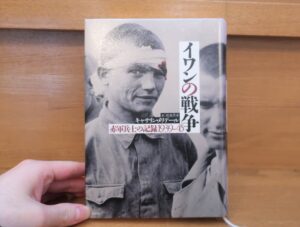
キャサリン・メリデール著、松島芳彦訳『イワンの戦争 赤軍兵士の記録1939-45』は白水社より2012年に発行されました。キャサリン・メリデールは以前当ブログでも紹介した『クレムリン 赤い城壁の歴史』の著者でもあります。
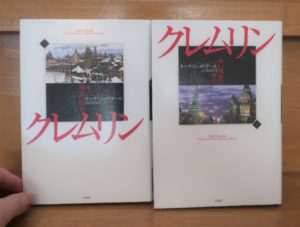
この本もものすごく刺激的で面白く、私は『イワンの戦争 赤軍兵士の記録1939-45』を読む前からキャサリン・メリデールの書いた本ということでものすごく期待していました。そして実際、期待以上に面白い本でした。これはものすごい本です。
この本は、私が独ソ戦の歴史を学び始めてからずっと疑問に思っていたことに答えてくれた本でした。
その疑問とは、「なぜソ連の兵士は死ぬとわかっていても戦い続けたのか」という疑問でした。
独ソ戦においてソ連は人海戦術と言えば聞こえがいいですが、信じられないほど大量の兵士をナチス軍に突撃させています。そして無残にも彼らは圧倒的な戦力差で蹂躙されたのでありました。
しかしこの人海戦術は結果としてナチス軍を撃退することになります。
スターリンの命令により兵士として戦闘を強制されたことはわかります。逃げたり捕虜となってしまえば身内共々殺すという規則が兵士を動かしていたこともこれまで学んできました。(以下の記事を参照下さい)

しかしそれでもなお彼らがなぜあそこまで悲惨な戦いを続けられたのかということが私にはどうしてもわからなかったのです。
そのことをこの本では当時の戦争経験者への聞き取りやソ連崩壊に伴う新資料を駆使して分析していきます。
この本では一人一人の兵士がどんな状況に置かれ、なぜ戦い続けたかが明らかにされます。
彼ら一人一人は私たちと変わらぬ普通の人間です。
しかし彼らが育った環境、ソ連のプロパガンダ、ナチスの侵略、悲惨を極めた暴力の現場、やらねばやられてしまう、戦争という極限状況が彼らを動かしていました。
人は何にでもなりうる可能性がある。置かれた状況によっては人はいとも簡単に残虐な行為をすることができる。自分が善人だと思っていても、何をしでかすかわからない。そのことをこの本で考えさせられます。
キャサリン・メリデール『イワンの戦争 赤軍兵士の記録1939-45』ソ連兵は何を信じ、なぜ戦い続けたのか?
Amazon商品ページはこちら↓
逢坂冬馬『同志少女よ、敵を撃て』あらすじと感想~本屋大賞ノミネートのおすすめ小説!独ソ戦を戦う狙撃兵の少女を描いた話題作!
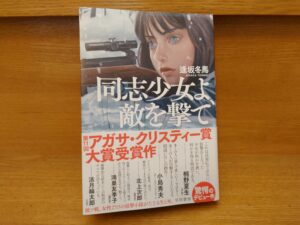
TwitterなどのSNSで話題になっていたこの作品でしたが、とにかく面白い!!とにかく読ませます!!
ストーリー展開や心理描写が非常に巧みで、どんどん物語に引き込まれます。読書への没入感がすごいです。
450ページを超えてくる大作ですが、あっという間に読んでしまいました。さすがに一気読みは時間の都合上できませんでしたが、中断時は早く続きを読みたくてうずうずしてしまいました。それほど魅力的なストーリー展開です。
この本の巻末には著者が参考にした本が一覧で掲載されています。
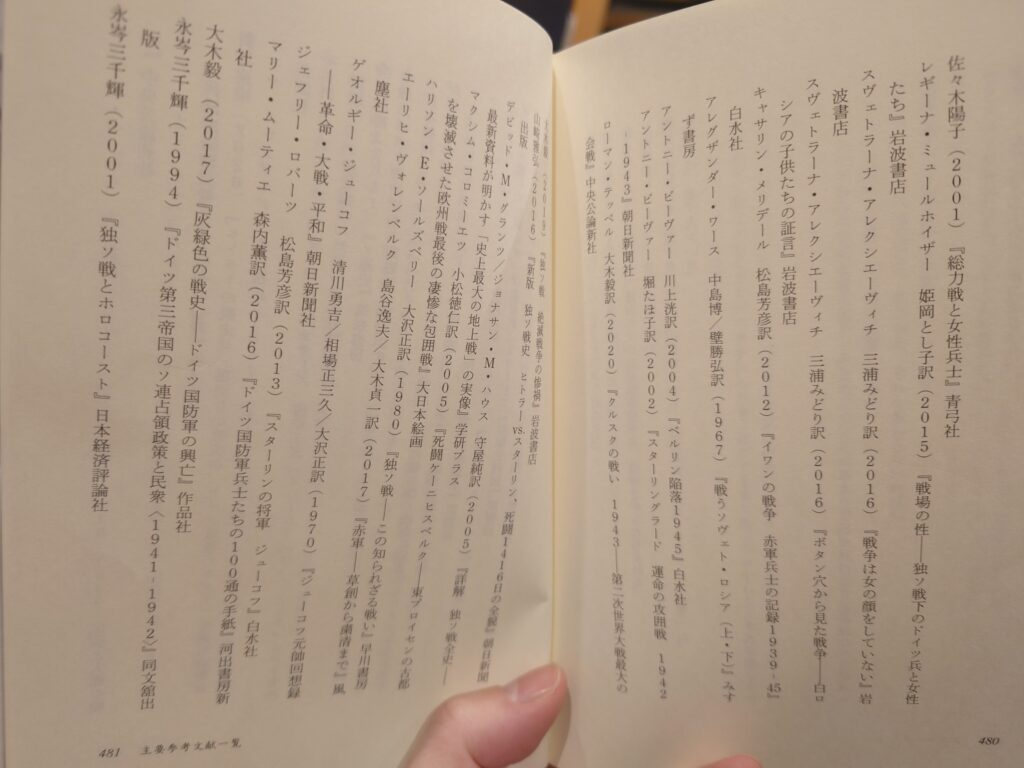
この記事で紹介している本がずらりと並んでいますが、『同志少女よ、敵を撃て』ではその中でもアレクシエーヴィチの『戦争は女の顔をしていない』やキャサリン・メリデールの『イワンの戦争 赤軍兵士の記録1939-45』の影響が感じられます。
上の二冊で語られる「どこまでも人間を悪魔化させていく戦争の現実」が『同志少女よ、敵を撃て』では深く落とし込まれています。それらをオリジナルのストーリーでここまで絶妙に語るこの作品には驚かされました。作者はこれがデビュー作だそうです。デビュー作にして自分が学んだことをここまで作品に落とし込みながら表現できる文才に羨望の思いです。
私はこの作品が独ソ戦を学ぶ入り口になってくれたらなと心から思います。
逢坂冬馬『同志少女よ、敵を撃て』あらすじと感想~本屋大賞ノミネートのおすすめ小説!独ソ戦を戦う狙撃兵の少女を描いた話題作!
Amazon商品ページはこちら↓
おわりに
以上、独ソ戦についてのおすすめ参考書を紹介しました。
独ソ戦を学ぶことは正直、精神的にかなり辛いことです。戦争のあまりの悲惨さを目の当たりにすることになります。
もちろん、太平洋戦争における人々の苦しみを軽視しているわけではありません。
ですが、あえて日本から離れた独ソ戦を学ぶことで「戦争とは何か」という問いをより客観的に学ぶことができます。
「戦争の本質とは何か」という問いを独ソ戦を通して学ぶことで何が生まれてくるのか。
それは「日本における戦争とは何だったのか」、「今の日本はどういう状況なのか」という問いです。
日本が戦った太平洋戦争とは何だったのか。なぜ戦争は起こってしまったのか。戦争中日本は何をしたのか。
独ソ戦を学んでから改めて日本の戦争を考えてみるとこれまでとは違ったものが見えてくるのではないでしょうか。
そして私は今、世界が戦争前夜なのではないかと恐れています。日本は今コロナ禍で大混乱ではありますが、日常生活レベルにおいては一見戦争には遠い平和のようにも見えます。しかし、本当にそうなのでしょうか。第二次世界大戦前夜も人々は普通に生活を送っていたのです。しかしいざ戦争が始まるやそれが一変してしまったのです。それが今起こらないという保証はどこにあるのでしょうか。戦争の兆候は注意しないと見えてきません。
私はいたずらに危機を煽りたいわけではありません。この不安が杞憂で終わってくれることを願っています。
ですが戦争にならないためには、戦争に突入せざるをえなくなる状況が作られる前にそれに気付くしかありません。それに気付けなかったからこそヒトラーは国民から合法的に選ばれ、熱狂的な支持を得て戦争へ向かって行きました。戦時下におけるソ連の体制も非常に示唆に富んでいます。
私自身の勉強という面もありましたが、皆さんにとっても「戦争とは何か」という問いを考えるきっかけとなってくれたならば嬉しく思います。
以上、「独ソ戦のおすすめ参考書16冊一覧~今だからこそ学びたい独ソ戦」でした。
関連記事

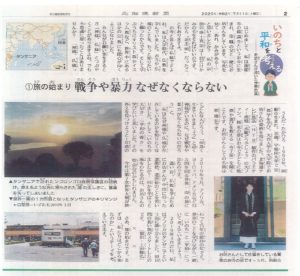
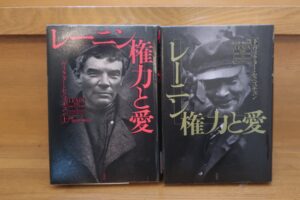



















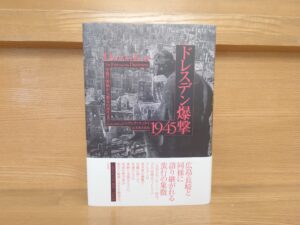
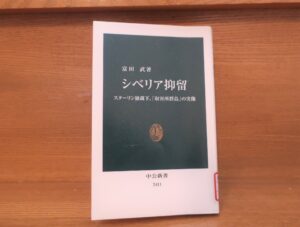
コメント